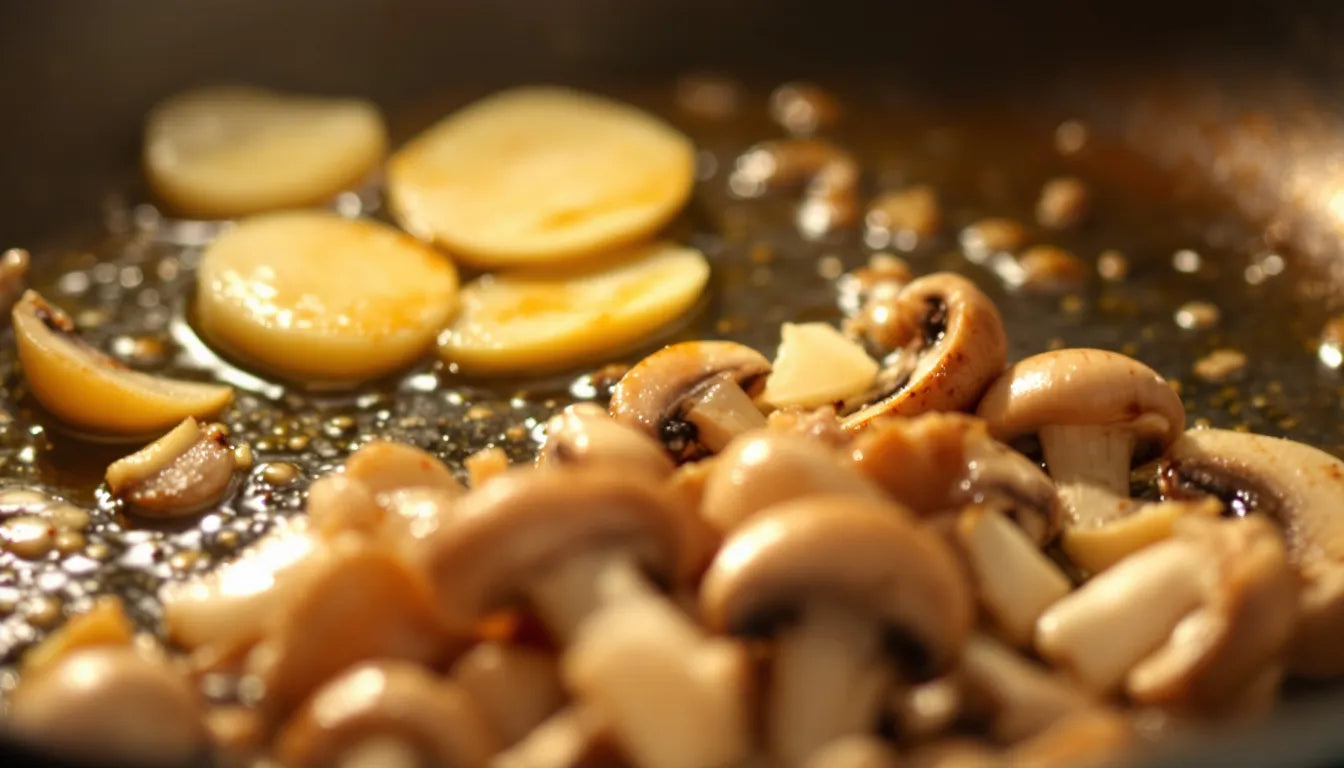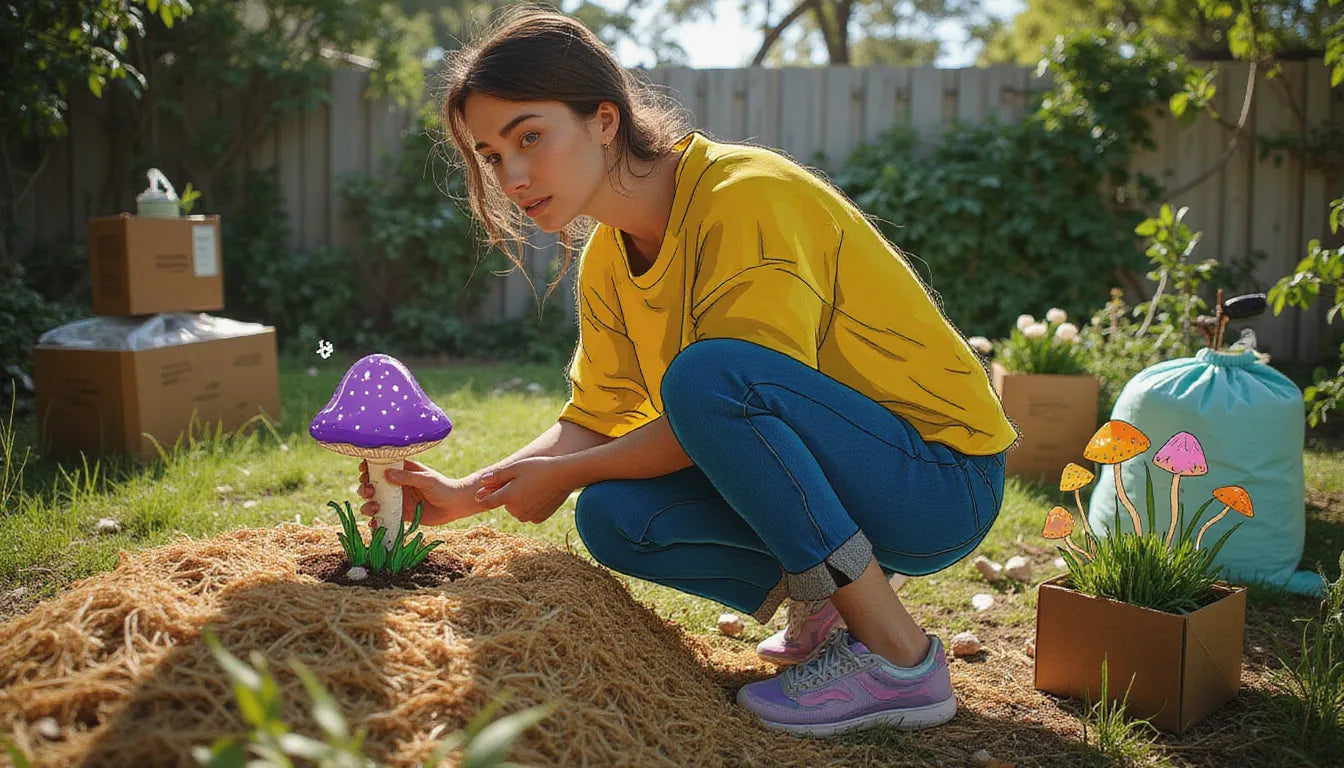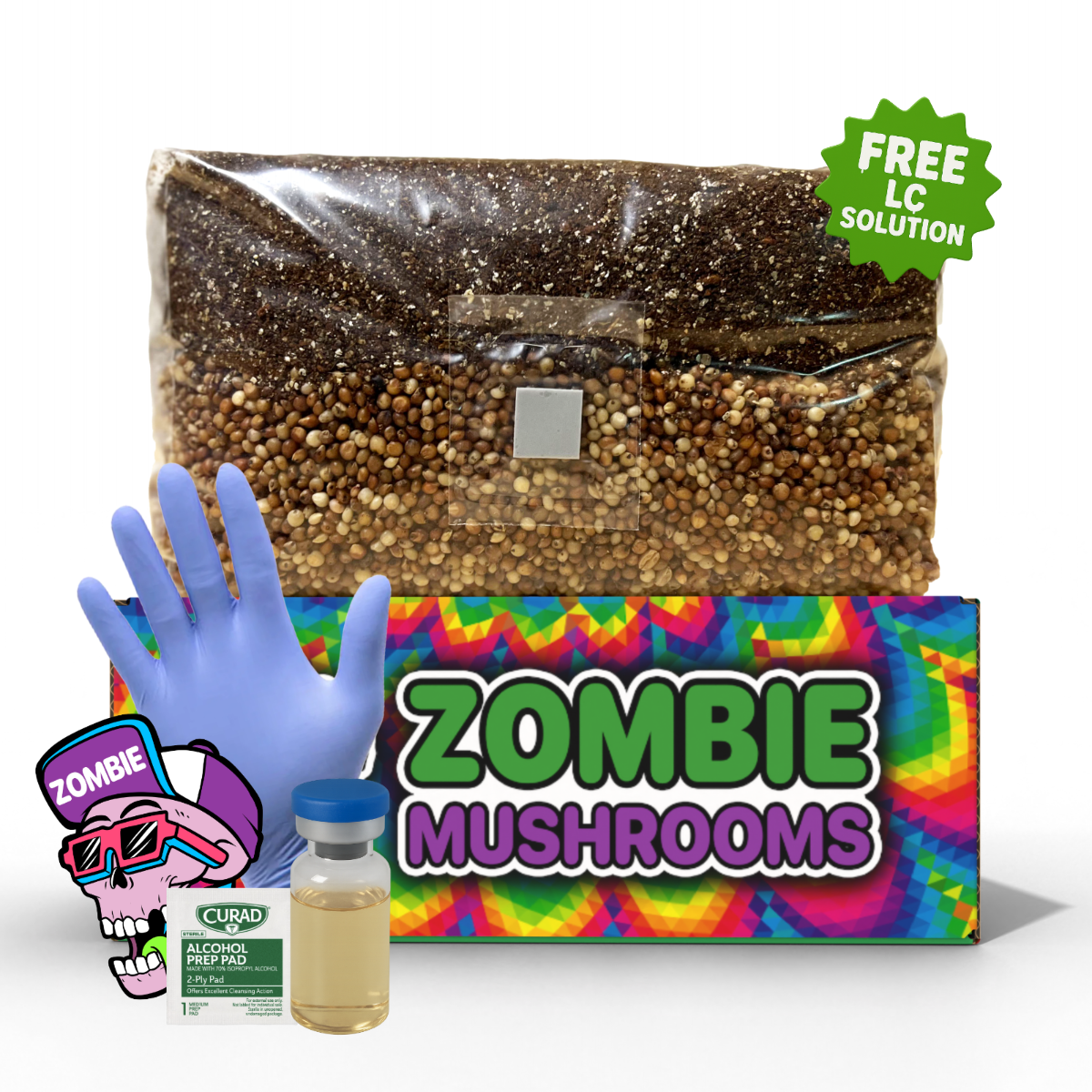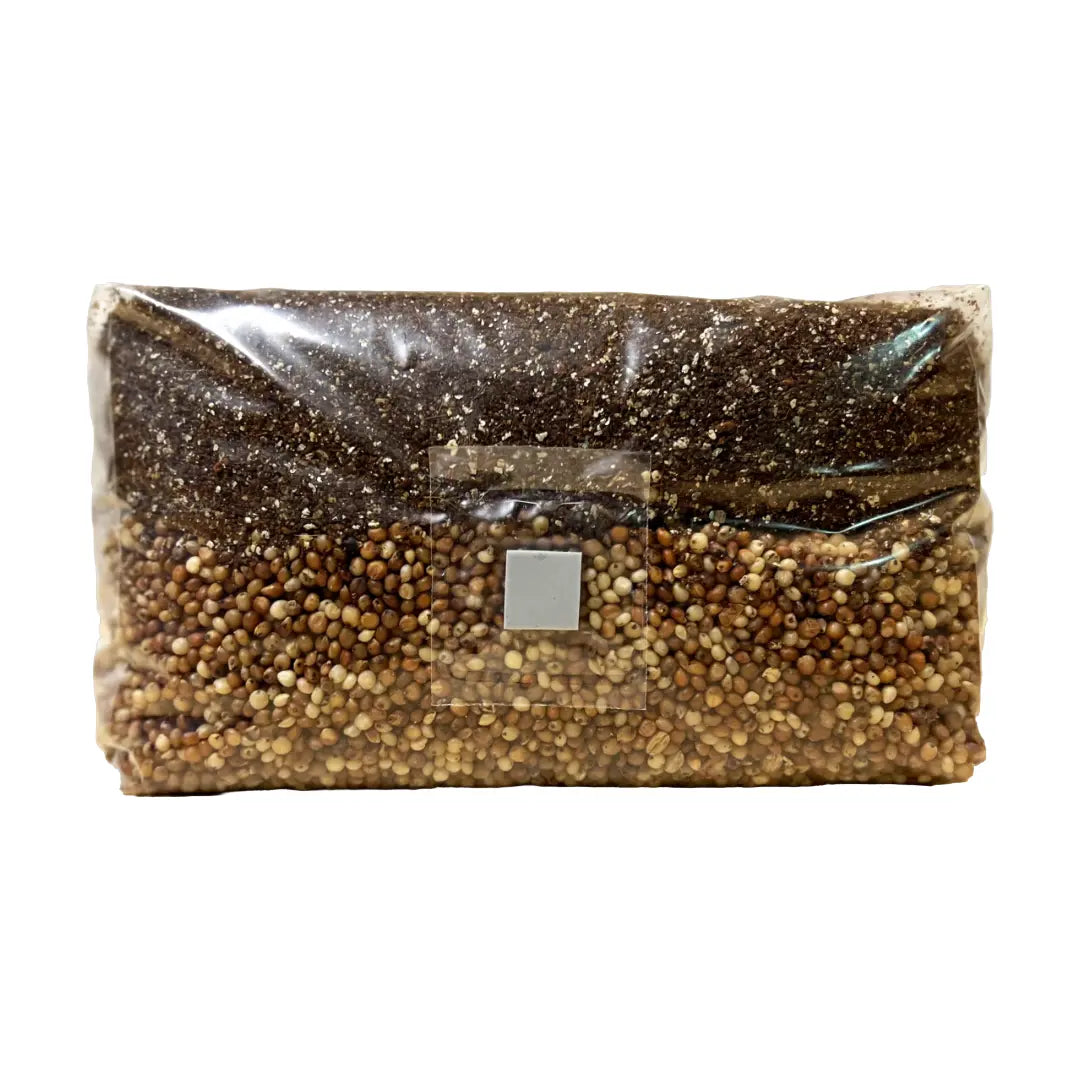⬇️ Prefer to listen instead? ⬇️

- Wood Blewit mushrooms need a cold snap to fruit, making them good for picking late in the season.
- Growing them can take up to 12 months. This needs patience and careful work with the substrate.
- Wood Blewits can grow outside in compost beds or inside with controlled humidity and temperature.
- Unlike oyster or shiitake mushrooms, Wood Blewits grow slower and react more strongly to changes in their surroundings.
- Using spawn to start is highly recommended over using spore culture because of the risk of contamination.

If you like the deep purple color of a Wood Blewit mushroom (Lepista nuda) or enjoy its light, floral taste in a thick winter stew, you might wonder if you can grow these unique mushrooms at home. Growing Wood Blewits is a good challenge for hobbyists and gardeners who like fancy food. But it needs more attention and patience than growing mushrooms like oyster or shiitake, which grow faster. This guide tells you how to grow Wood Blewit mushrooms. We'll cover what they need naturally and how to set up outdoor beds or indoor humidity spaces. This way, you can pick these purple mushrooms from your yard or basement. For indoor cultivation, our large monotub provides the steady humidity and airflow Wood Blewits need, making it easier to create the right environment for successful harvests.

What Makes Wood Blewits Different from Other Mushrooms?
Wood Blewits are different from most other edible mushrooms in interesting ways. Biologists call these fungi Lepista nuda. They are saprophytes. This means they break down dead organic stuff to get food. This job helps recycle nutrients in forests. They like to eat leaf litter, compost piles, wood chips, and rotting plant matter. This means you can use different things to grow them on.
Unique Physical Characteristics
What really makes Wood Blewits different is how they look. The cap and gills are purple or lilac when they are young. Then they slowly turn light brown or tan as they get older. When you slice them, they smell a little like anise or flowers. People like them for cooking, but also for teaching about plants and even for making natural dyes. In fact, Wood Blewits can dye cloth and paper a soft green color when boiled. This is rare for edible fungi.
Another thing that sets them apart is that they need cold to fruit. These mushrooms need natural cold snaps, usually in autumn or early winter, to start making mushrooms. This helps them grow when most other mushrooms are done for the season.
“Wood Blewits need a frost snap to start fruiting — they often show up in late autumn or even into December depending on where you live and the weather” (ScienceDirect, n.d.).

Is Growing Wood Blewit at Home Worth It?
So, is growing Wood Blewits worth the effort? If you want mushrooms fast and a lot of them, maybe not. But if you are a patient grower who likes the process and likes rare and tough fungi, then yes.
Pros
- Harvest late in the season. This lets you pick mushrooms into the winter months.
- They look nice. This makes them good for teaching or for gardens.
- The taste is good for many dishes and feels special, especially in winter food like risottos and stews.
- They help the soil after you pick them. The leftover mycelium keeps breaking down organic stuff.
Cons
- You have to wait a while. A whole year might go by between starting and picking your first mushrooms.
- Need cold weather. You might need to use a fridge or wait for the right season to create the cold needed.
- Sensitive to moisture. These mushrooms don’t do well if they get too dry or too wet.
In short, growing Wood Blewits is best for people who like to be careful, have patience, and enjoy picking mushrooms in season.

Outdoor Cultivation: Growing Them Like Nature in Your Yard
Setting up an outdoor bed is probably the closest you can get to how the mushroom grows naturally. This works well if you live where it gets cool.
Good Spot Conditions
- Partial shade. It’s best under trees that lose their leaves in autumn. This helps keep a natural compost layer.
- Loamy soil mixed with stuff high in carbon like leaf litter, sawdust, or straw.
- A spot that drains well. This stops mold and rot, which can compete with or kill the mushroom mycelium.
How to Set Up an Outdoor Bed Step-by-Step
- Stop weeds: Put a layer of cardboard on the ground.
- Make substrate layers: Mix hardwood chips, old compost, and straw. Make layers about 6–8 inches deep.
- Add spawn: Spread Wood Blewit spawn you bought between the layers.
- Top with straw or leaves: This helps keep it damp and protects the bed.
- Water often: Don't water too much, but the bed should feel damp. Not dry, but not soaking wet either.
- Wait and watch: It might take several months for the mycelium to grow. When winter comes and it gets cold, the mushrooms might start growing.
If you take care of them, these outdoor beds can keep producing mushrooms for several years. It helps if you add fresh organic stuff and more spawn every year.

Indoor Growing: Benefits of a Controlled Space
If you don't live where it has clear cold seasons, growing Wood Blewits indoors lets you create the exact conditions they need. You need more gear to make the right atmosphere, but having more control can mean more steady success.
Where to Set Up
- Cool Basement or Shed: Temperatures should stay steady between 45°F and 70°F (7 to 21°C).
- Growth Tent or Greenhouse: If you already grow other plants or mushrooms inside, you can change this space for Blewits.
Main Tools for Growing Indoors
- Substrate containers like tall bins, grow bags, or mushroom bags with filter patches.
- Humidity system, like a spray bottle, a cool-mist humidifier, or a humidity dome.
- Grow lights or soft regular lights to fake morning/evening light cycles. Wood Blewits like dim light.
- How to make them fruit using cold. You can put them in a fridge or near a cold window or garage door outside.

Tips for Success Indoors
- Even if indoors, make sure to create a cold season. Move the kit to a colder place or put the substrate that has mycelium in the fridge for a short time before you want them to fruit.
- Use a hygrometer to keep humidity high (85 to 95%) and check how much moisture is in the air.
- Make sure your setup lets air move. Stale air with lots of CO₂ can stop fruiting and cause contamination.
Choosing and Getting the Right Substrate Ready
The substrate is where your mushrooms get their food. For Wood Blewits, you need organic materials rich in lignin and high in carbon.
Best Substrate Options
- Hardwood chips (chips from oak, maple, or beech trees are best)
- Straw, especially wheat straw that has been chopped and treated with heat
- Compost with lots of leaf litter
- Manure that has broken down well, if it's naturally aged and fully composted
Pasteurization: You Must Do This
Substrate that hasn't been treated with heat can become a place for bad molds and bacteria to grow.
How to Pasteurize
- Put the straw/hardwood mix into a mesh bag or pillowcase.
- Put the bag in water heated to 160 to 180°F (71 to 82°C) for one hour.
- Take it out and let it cool and drain before adding spawn.
- Mix in spawn and put it into your grow bed or container.
If you don't do this step, your crop could get contaminated and never make mushrooms.
Mycelium Growth: What to Look For
Colonizing the substrate is when the mycelium – like the mushroom's roots – grows into the growing material.
Signs of Healthy Growth
- White, fuzzy strands start spreading out.
- An earthy, nice smell—not sour, moldy, or rotten.
- Steady growth: Over weeks and months, the mycelium beds become tight networks.
Tips to Help Mycelium Grow
- Don't touch the substrate while the mycelium is growing.
- Keep moisture at a steady level. Don't let water pool.
- Let air move in your growing space 1 to 2 times a day to stop CO₂ from building up indoors.

Making Them Fruit and Growing Conditions
After several months, usually 6 to 12 depending on the space and materials you used, the mycelium will be strong enough to fruit.
Key Conditions Needed
- Temperature Drop: A drop to about 40 to 50°F (4 to 10°C) is often what finally makes them fruit.
- Steady Moisture: The soil or substrate must stay damp. Add water by misting, rain, or a humidifier.
- Indirect Lighting: Soft natural or fake light helps the last stage of development.
After the cold trigger, it might take 7 to 14 days to start seeing mushrooms.

Picking Wood Blewits: The Right Time for Best Taste
Wood Blewits keep growing after they start to fruit. Checking them every day makes sure you pick them when they taste best.
How to Know When
- Mushroom Cap Shape: Pick them when the cap fully opens but still has color and is firm.
- Stem Texture: Soft stems mean they are too old. Stems should feel firm and crisp.
- Don't pick them when wet: Soggy mushrooms rot faster and don't taste as good.
Pick them gently by twisting at the bottom instead of pulling. This helps not mess up the mycelium network.

Ways to Cook and Keep Them
Blewits’ light anise smell and soft feel make them well-liked in wild food cooking in Europe and North America.
Good Ways to Cook Wood Blewits
- Cooked with rosemary and garlic and put on toast.
- Mushroom soups made with cream.
- Mixed into winter vegetable roasts.
- Make the taste better with butter, olive oil, or dry white wine.
Keeping Them for a Long Time
- Drying: Use a food dehydrator or a low oven setting. Store in jars that seal tightly.
- Freezing: Cook them first before freezing so the texture doesn't change.
- Don't eat them raw. Wood Blewits have compounds that can bother your stomach when not cooked.
Timeline: What to Expect Month by Month
Patience helps with this type of mushroom.
| Month | Stage |
|---|---|
| 1–2 | Start adding spawn & mycelium begins growing |
| 3–6 | Mycelium spreads, forming a colony |
| 7–9 | Outdoor beds get older, compost builds |
| 10–12 | Wait for cold trigger, fruiting starts |
Some growers say they get more mushrooms in the second and third years. This means putting time in for the long term is worth it.

How to Fix Problems: Common Issues
Don't give up if your Wood Blewits are hard to grow. Figure out what's wrong and change things.
Common Problems and What to Do
- Green Mold in Substrate: Cut out the bad part and let more air get to it.
- No Fruiting: Indoors? Did you make it cold? Outdoors? Be patient or check how damp it is.
- Bug Damage: Use diatomaceous earth or put up mesh.
- Mycelium Stops Growing: Check substrate dampness and for contamination. Start over if you need to.
List of What You'll Need
Start well with these main things
- Wood Blewit spawn from trusted companies like Zombie Mushrooms
- Substrate materials that have been treated with heat (hardwood, straw, compost)
- Plastic grow bags, trays, or raised garden beds
- Thermometer and hygrometer
- Humidifier or misting bottle
- Lighting (optional indoors)
Starter kits make learning easier and come with everything for your first grow cycle.
Can You Start from Spores?
Yes, you technically can. But growing Wood Blewits from spores is best for people who are already good at growing mushrooms.
Problems with Spore Cultures
- Genes are not the same each time
- Higher chance of contamination
- Needs clean lab conditions
For beginners and even those with some experience, spawn or liquid cultures from good suppliers make it much more likely you will be successful.

Who Should Think About Growing Wood Blewits?
Growing Wood Blewits is a great fit for
- Gardeners who live where it has cool fall and winter weather
- Teachers or people who look for wild food who want something easy to show or use indoors/outdoors
- Chefs and food lovers who like rare, seasonal fancy ingredients
If you want mushrooms fast like oyster mushrooms, or are new to fungi, think about starting with a type that is easier first. But if you are ready to know more about growing mushrooms, Wood Blewits are an interesting and colorful challenge.
Want to grow Wood Blewit mushrooms? Go to Zombie Mushrooms for spawn, full grow kits, and expert help—everything you need to grow these fungi that like cold weather in your yard or grow room.
Citations
- ScienceDirect. (n.d.). Lepista nuda. Retrieved from https://www.sciencedirect.com/topics/agricultural-and-biological-sciences/lepista-nuda



